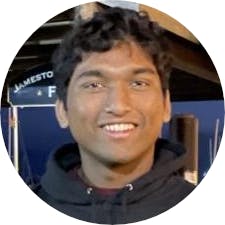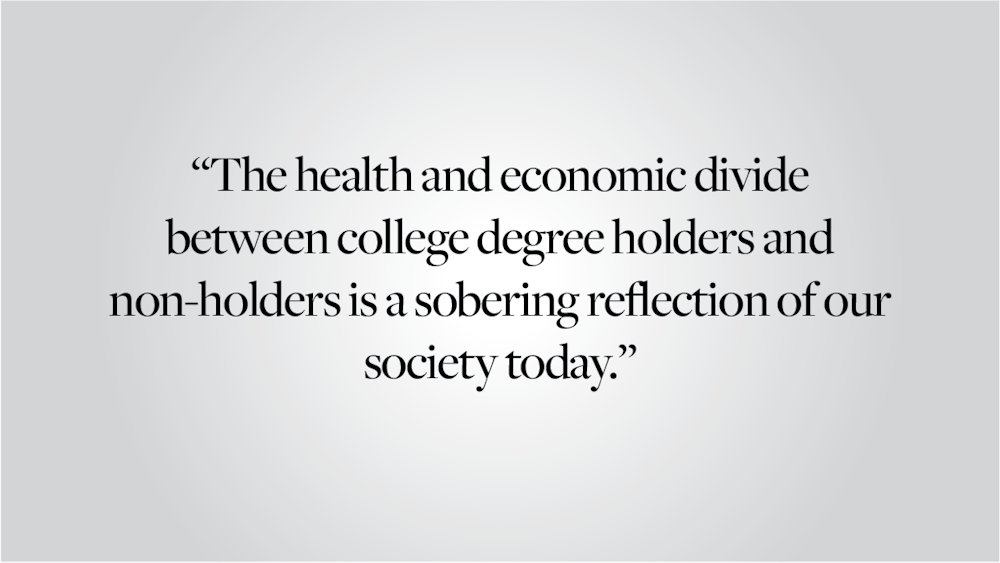Despite low unemployment, growth in real wages and strong GDP figures, only 19% of Americans characterize the economy as excellent or good, and nearly half of Americans expect things to get worse. Furthermore, America is deeply politically polarized, and while the division historically fell along class lines, education is currently the dividing factor. The growing divide between the degree have and have-nots has coincided with a rise in social detachment and deaths of despair, like overdoses and suicides, among many without college degrees in America. For the health and preservation of our society, policymakers must work to address these disparities and create real opportunities for those holding a high school diploma.
This “class disalignment,” caused by the failure of educated liberals in power to meaningfully address working-class living conditions and concerns, has only deepened this new political reality. This occurred within the context of the erosion of America’s unions, the rise in costs of health care, and, for those without a degree, the slow growth of gainful employment opportunities and wage stagnation. Perhaps skepticism is warranted. On balance, America is doing well, but we ought to ask: Whose America? The one of college graduates or the one of people who did not attend college?
The U.S. currently has the worst life expectancy among its peer OECD countries. This is driven by high smoking mortality, obesity, homicide, suicide and opioid overdoses, among other factors. This, of course, correlates with educational attainment. A Princeton study found that the average life expectancy for a 25-year-old in 2021 with a college degree was 83 years, whereas the expectancy for one without was 75. As the two economists behind the study pointed out: “If all Americans had the life expectancy of the college-educated, the United States would have been one of the best performers among the rich countries in terms of life expectancy, not the worst.” America is unique in that life expectancy significantly diverges as a function of higher education, much of which can be attributed to our dysfunctional social safety net, and our private health care system where non-degree holders and low-income individuals make up the majority of our nation's uninsured population.
The economic picture is even more stark. In the wake of the 2008 financial crisis, those with a high school degree or less lost 5.6 million jobs. Degree-holders never faced similar losses. And through 2016, degree-holders gained 8.4 million new jobs — while those without degrees only recovered 80,000. Between 1989 and 2016, the median wealth of families with at least one college graduate grew from $238,000 to $291,000, whereas for non-grad families, it fell from $66,000 to $54,000. Trickle-down economics has been just that, a trickle, and understanding these numbers can help one understand the motives behind the rise of Donald Trump and American populism writ large. Neither the Democratic nor the Republican party has successfully addressed the legitimate concerns of Americans without college degrees and, as a result, many of these Americans sought out a ‘third way’ by turning to populist ideologies.
All of this paints a bleak picture of American society today, but our past need not necessarily define our future — policymakers have a role to play as well. I’m not proposing that everyone pursue higher education. While college is often the best financial investment a young person can make in their lifetime, it's not always the right choice. There is a need for blue-collar workers. Those working these jobs deserve to have dignity and financial independence.
To address the economic despair faced by workers without a college degree, we need to strengthen the place of the union and establish more vocational career pathways, like apprenticeships and trade schools, as an alternative to college. Additionally, universities ought to expand pathways for community college graduates and reduce costs to become more accessible. We need to expand our social safety net and increase access to health care with a focus on primary and preventive care. And lastly, local governments and community organizations ought to expand public health outreach in their communities to mitigate the negative health exposures facing people without college degrees.
The health and economic divide between college degree holders and non-holders is a sobering reflection of our society today. However, by coordinating stakeholders in politics, medicine and higher education, we can bridge the gap and create a healthier, more equitable society for everyone — regardless of their college attendance.
Tas Rahman ’26 can be reached at tasawwar_rahman@brown.edu. Please send responses to this opinion to letters@browndailyherald.com and other op-eds to opinions@browndailyherald.com.

Tas Rahman is an opinions editor at the Brown Daily Herald writing about issues in higher education. When he's not coding or studying biochemistry, you can find him hiking and enjoying the great outdoors.





